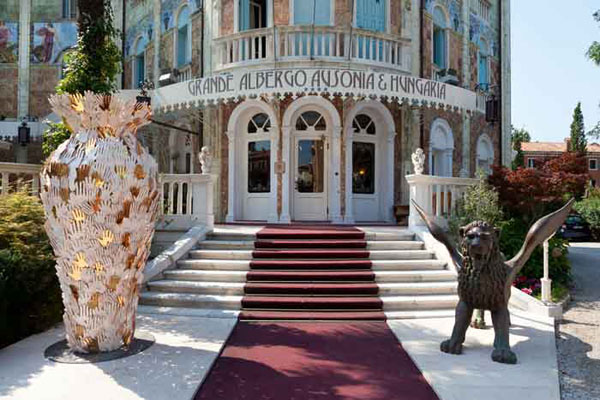Italy - Tarshito

Thanks to his close knowledge and friendship with India, the Italian artist Tarshito has developed a personal and original symbolic universe in which certain easily recognisable elements appear, some belonging to ancient tradition, remodelled to create an individual language expressed through painting, sculpture and installations.
In a group of sculptures, the lotus flower becomes a spring, and numerous lotus buds link to form articulated springs, in which water flows, connecting the various elements into one complex unit.
In another project, the shapes of ancient musical instruments are dilated to become chairs, compartments, unusual architectural forms, in which the body of the player is transformed and pervaded by the harmony produced.
Elsewhere other symbols appear such as the hand, roots, a vase, all elements present in sacred iconography.
Perhaps the most characteristic shape in Tarshito’s symbolic vocabulary is the vase. A vase with an archetypical shape, universally recognisable, which intentionally bears the imprint of all cultures and of none in particular, and expresses harmony and friendship through its line connected to profound symbolism: welcoming, receiving, the body receiving and generating, the soul that does not close but seeks and maintains a receptive condition towards the outside world. Tarshito has produced numerous variations of this recurrent form, including the one proposed at OPEN 14. Here the vase is covered with a multitude of little open hands in a gesture which offers, greets and beckons, adding further connotations to the large basic welcoming form that creates the sculpture’s underlying symbolic resonance.
Text by
Gloria Vallese